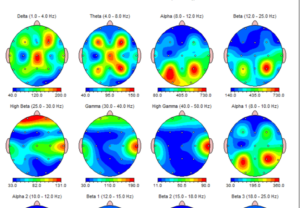Unlocking the Mysteries of the Brain Through qEEG Cerebral Mapping Techniques in Mental Wellness Assessment
Unlocking the Mysteries of the Brain Through qEEG Cerebral Mapping Techniques in Mental Wellness Assessment
Blog Article
Comprehending the human mind is a complex task, especially when it pertains to psychological health. Conventional approaches of assessment often rely on conversations and questionnaires, which can sometimes miss crucial details about how the brain functions. This is where quantitative brainwave analysis, or qEEG, enters into play. qEEG is a specialized technique that measures neural signals in the brain. By examining these neural patterns, mental health experts can obtain important understandings into a individual's mental state, helping to improve assessment and intervention.
qEEG functions by applying small sensors on the scalp to record brain signals. These electrodes detect electrical impulses produced by nerve cells, the units in the cerebrum that interact with each other. The data collected is then analyzed and displayed as a series of patterns. Each kind of brainwave—such as alpha, β, delta, and θ—corresponds to different mental conditions and activities. For example, α waves are often associated with calmness, while β waves are linked to engaged thinking and problem-solving. By examining these patterns, healthcare providers can detect abnormalities that may suggest psychological health concerns.
One of the major advantages of qEEG is its capability to provide objective information. In contrast to conventional assessments that rely on personal accounts from clients, qEEG provides a clear picture of brain activity. This clarity can help reduce biases in diagnosis and lead to more accurate intervention strategies. For example, if a client is facing anxiety, qEEG can reveal specific trends of brain function that are associated with stress conditions. This data enables psychological health professionals to tailor interventions more effectively, whether through therapy, pharmaceuticals, or alternative approaches.
Additionally, qEEG can be especially beneficial in monitoring treatment progress. By conducting qEEG assessments at different stages during treatment, healthcare providers can monitor variations in neural activity over time. This ongoing evaluation assists ascertain if a intervention is working or if modifications are required. For instance, if a client is not responding to a particular medication, qEEG may show that their brain activity has not altered in a way that suggests progress. This feedback loop can lead to more personalized and efficient mental health treatment.
In summary, qEEG cerebral mapping is a potent instrument in the domain of psychological health evaluation. By providing objective information about brain activity, it try this site enhances the understanding of different mental health conditions. This method not only assists in accurate diagnosis but also assists in tracking intervention success. As mental health experts continue to investigate the potential of qEEG, it possesses potential for enhancing the well-being of people facing mental health challenges. With ongoing research and advancements in techniques, the secrets of the brain may turn clearer, leading to better outcomes for those in need of support.